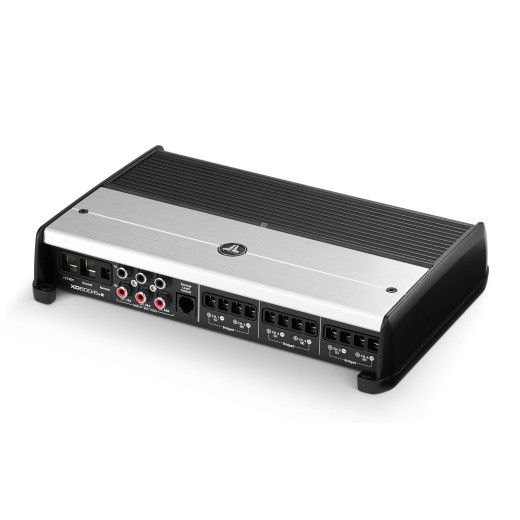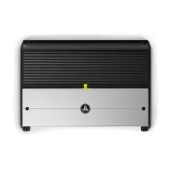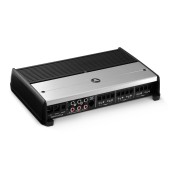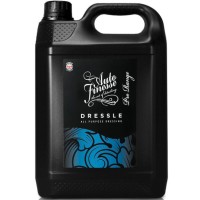JL Audio XD600/6v2 amplifier
More about the product
- Use our consulting room
- You can return the goods to us within 14 days
- Try the product at our store
JL Audio XD600/6v2 amplifier
JL Audio amplifiers of the XD series combine impressive and faithful sound, high performance and, above all, very small dimensions. The XD amplifiers use JL Audio's exclusive NexD™ technology to generate large amounts of power with exceptional efficiency and reduce current draw and heat. They achieve efficiencies in excess of 80%, meaning they produce far less heat and stress on your vehicle's electrical system than a typical analog amplifier would. This efficiency advantage combined with state-of-the-art microelectronic components allows very compact cast iron heatsinks to be used. The XDv2 also features the Advanced Thermal Rollback System, which eliminates shutdowns so your music can keep playing without interruption. The end result is excellent audio performance and reliability in a compact amplifier that is easy to install in the tightest of spaces. Under each XDv2's removable control cover, you'll find studio-grade signal processing with fully variable crossover filters. Also included are highly flexible differential balanced noise canceling inputs with remote level control capability. Also included is an automatic power-on function (via signal sensing or DC offset sensing) and a dual-range differentially balanced input section capable of handling a wide range of input voltage levels. Some may only see a small amplifier. But for those who appreciate great sound, the JL Audio XDv2 reveals something amazing.
The main features of the JL Audio XD600/6v2 amplifier
- 6-channel class D amplifier.
- Power 6 x 75 / 3 x 200 W RMS (4 Ω), 6 x 100 W RMS (2 Ω).
- Compact dimensions thanks to digital technology.
- NexD™ technology for superior sound fidelity and high efficiency.
- Advanced thermal protection Advanced Rollback Protection.
- Differentially balanced inputs to eliminate noise.
- All connection terminals on one side.
- RCA high level inputs.
- Outputs for connecting another amplifier.
- Electronic crossover Full / HP / LP.
- Continuous input power control.
- Variable high and low bandpass.
- Automatic on and off function.
- Optional remote control (not included).
About the JL Audio brand
JL Audio is an American manufacturer of consumer audio equipment that specializes in home, vehicle and boat sound systems. It is one of the main pioneers of vehicle sound systems and is undoubtedly best known for its high-end subwoofers. The company was founded in 1975 and is therefore one of the oldest manufacturers in this field. The original focus was on home sound systems, but already at the turn of the seventies and eighties, they also started to deal with the car audio segment, the popularity of which grew rapidly at the time. During their rich history, JL Audio produced a lot of completely unique and patented subwoofers that had almost no competition at the time. And it is similar even now. Subwoofers from this manufacturer amaze with their performance and at the same time absolutely top sound quality, unique patents and excellent workmanship. In particular, the top W6 and W7 series have long been among the most interesting products on the market today. However, the revolutionary flat subwoofers of the TW1 and TW3 series, as well as the perfectly tuned subwoofer enclosures, will also impress. You can expect the same quality from the amplifiers, and it's also worth noting the high-end products designed for integration into factory audio systems. In short, you can't go wrong with JL Audio products and you can always rely on their high quality and uniqueness.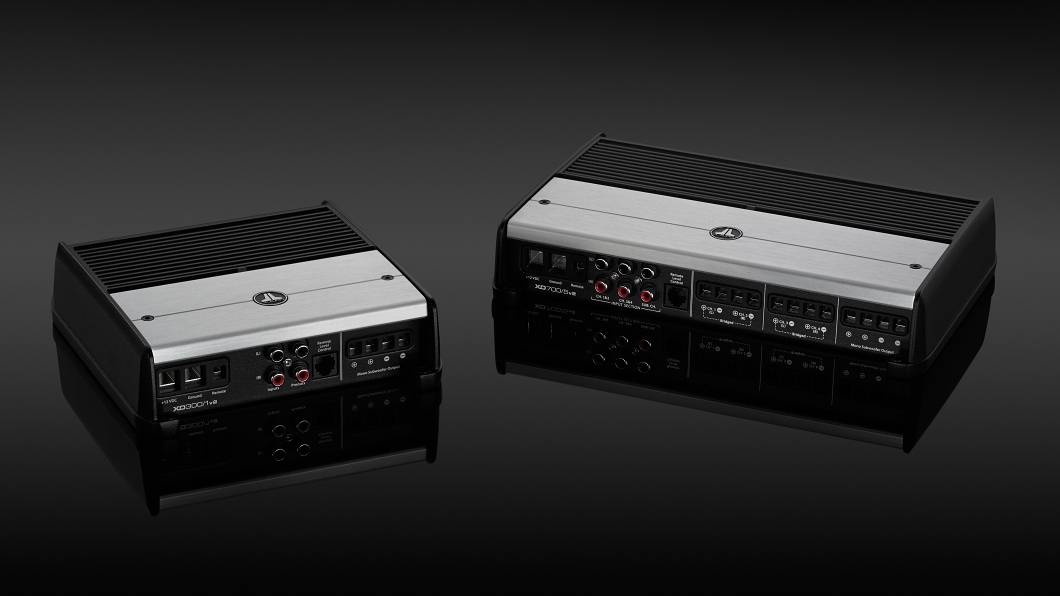
| Catalog number | XD600/6V2 |
| Brand | JL Audio |
| Links | Official web presentation (English) |
| Number of amplifier channelsAmplifiers are divided into: - Monoblocks - 2-channel - 3-channel - 4-channel - 5-channel - 6-channel - multi-channel Each channel is used to power one speaker for the coaxial type, or one side if they are component speakers. Monoblock type amplifiers are mainly used for subwoofers. 2-channel are suitable for both subwoofers and, for example, the front pair of speakers in a car. 3-channel is used for front or rear speakers + subwoofer. 4-channel are used for front + rear speakers or 1 pair of speakers + subwoofer. 6 or 5-channel are used for 2 pairs of speakers + subwoofer, most often. Bridging means connecting the amplifier to a bridge, using the + pole from one channel and the - pole from the other channel. In most cases this is shown as "BRIDGED" on the amplifier. | 6 |
| Energy class of the amplifierAmplifiers are divided into two basic classes: analog and digital . Analog amplifiers (A/B) have higher consumption requirements, but usually have a more natural sound. Digital amplifiers (D) have significantly lower consumption and higher efficiency, but the sound may not be as faithful as with classic analog amplifiers. | D |
| RMS power into 4 ΩRMS power when loading speakers or subwoofer at 4 Ω. RMS power is the constant power of the amplifier and is one of the most important parameters when choosing an amplifier. | 6 x 75 / 3 x 200 W |
| RMS power into 2 ΩRMS power when loading speakers or subwoofer at 2 Ω. RMS power is the constant power of the amplifier and is one of the most important parameters when choosing an amplifier. | 6 x 100W |
| Low-pass filter (LPF)LPF / LP or "low pass filter" offers the possibility to adjust the amplifier using a potentiometer so that the lower band plays only the frequencies in a certain band that you need. This filter is used to adjust the frequency range for the subwoofer, so that it does not overload or distort the sound. Example: Amplifiers most often have an LPF from 20 to 300 Hz. We recommend setting this potentiometer in the range of 45-80 Hz. | 50 - 500 Hz |
| High pass filter (HPF)HPF / HP or The "hi pass filter" offers the option of setting the amplifier using a potentiometer so that medium, possibly mid-bass and treble frequencies play upwards from a certain frequency. Example: Amplifiers most often have an HPF from 40 to 300 Hz. If we set the potentiometer to a value of approx. 150 Hz, the sound will be clipped so that it plays frequencies from 150 Hz up to the maximum upper limit of the entire frequency range of the amplifier, perhaps up to 20,000 Hz. We recommend setting this potentiometer in the range of 80-160 Hz. Thanks to this setting option, the speakers can handle a higher performance, as you will not overload them with bass in the lower frequency range. | 50 - 500 Hz |
| Frequency rangeThe ability of the amplifier to reproduce the signal from the lowest frequency to the highest = faithfully reproduce the sound in a specific frequency band. Professionally: In the frequency range from 40 to 16,000 Hz, the vast majority of fundamental and overtones (harmonics) of all musical instruments are found. We are interested in the course of the radiated sound pressure in this range of frequencies when the loudspeaker system is supplied with constant power. We call this course the frequency characteristic, which tells us the level of radiated sound pressure in decibels (dB) depending on the frequency. The frequency characteristic of a speaker or speaker system can be expressed most succinctly with a graph. Mostly, however, the frequency characteristic is indicated by indicating the maximum tolerance of the sound pressure in the given frequency range, e.g. 50 to 15,000 Hz -+ 6 dB. Since the frequency characteristics of loudspeakers and systems in general are quite uneven, some manufacturers do not even specify this maximum tolerance of sound pressure in decibels in their catalogs for reasons of prestige. Data impoverished in this way is unfortunately worthless. What is valid is that the manufacturer offers a speaker system with a frequency range of 30 to 20,000 Hz, if he is worried about stating the maximum unevenness of the sound pressure in this range, because he can have a tolerance of, for example, +- 20 dB. The unevenness or undulation of the frequency curve in good speaker systems for high-quality music performance should not exceed +-3 dB in the 80 to 12,000 Hz band and +-6 dB in the 40 to 16,000 Hz band. Greater unevenness already depletes or emphasizes certain tonal areas, which can cause audible or even disturbing distortion. The proportion between fundamental tones and higher harmonics also changes, thereby changing the color of the sound, and individual musical instruments as well as the entire musical image sound unnatural. | 12 - 22000 |
| Harmonic Distortion (THD)Total harmonic distortion indicates how much the input signal is distorted in the amplifier. Distortions appear as overtones contained in the output signal. The proportion of originally absent parts of the signal is given as a percentage, typical values are between 0.001% and 0.5%. Distortion is measured in their power band. If it exceeds the limit of 0.7% from a certain power, it is the value of the output power of the given amplifier, from which it no longer plays without distortion and from which the distortion usually increases steeply, so that no further increase in power can be counted on. The lower the value, the better. | < 1% |
| Signal-to-noise ratioThe signal-to-noise ratio means that the output signal always contains noise. The signal-to-noise ratio expresses how much of this noise is compared to the useful signal. The so-called A value is given, which does not take deep and very high frequencies into account. This corresponds to the characteristic of human hearing, which is not so sensitive to deep frequencies, especially below 1 kHz. The higher the value, the better the amplifier is. | > 104 dB |
| Input sensitivityIn order for the amplifier to perform its function correctly, it requires an input signal of a certain level, which is different for car radios. It is measured in "Volts" (e.g. 2 V, 4 V, etc.) The higher the value at the output of the pre-amplifier, or car radio, the less demands are placed on the power of the amplifier. However, the amplifier must allow this input sensitivity, and for that reason this value is also given for the amplifier. | 0.2 - 8 V |
| Damping factorDF - Damping Factor . It is the ratio of the load (repro + cables, crossover, etc.) to the internal resistance of the amplifier. The bigger the DF, the more controlled the bass. Amplifiers with a lower DF tend to hum. Subwoofers with a higher Q in the bass reflex and sometimes in the enclosure will also cause humming. | > 150 / 50 Hz @ 4 Ω |
| High level inputsThe high-level input on the amplifier allows connection directly to the existing speakers in the car without additional purchase of an external high/low adapter. Important equipment in the case of installing an amplifier on an original car radio. | Yes |
| Automatic on and offThis function allows you to automatically switch on the amplifier. | Yes |
| Socket input terminalsFerrule terminals allow better wiring contact to the amplifier. It is also a more secure form of terminals. If you are tightening the sleeve terminals, we recommend retightening them after 1 day, as the connected cable gradually compresses. | Yes |
| Remote control included in the packageSome models of amplifiers also come with wired remote controls in the package, which on one side plug into the amplifier and on the other side you have a potentiometer that you can place anywhere in the cabin. A common place to place the remote control is under the steering wheel. The advantage is the regulation of power, and therefore volume, depending on driving conditions and the mood of the crew in the car. | No |
| Input for wired remote controlIf the amplifier has a remote control input. | Yes |
| The value of the fuses on the amplifierFrom the value of the fuses on the amplifier, you can get a true picture of the real performance of the amplifier. | 1 x 50 A |
| Dimensions of the amplifier | 260 x 180 x 52 mm |
| Mass | 2.63 Kg |
